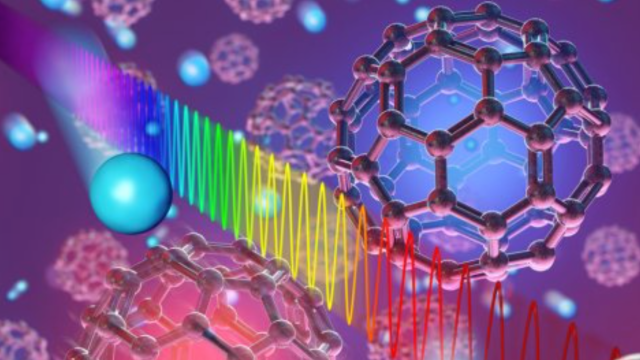Scientists have characterised the quantum behaviour of buckminsterfullerene molecules, also known as buckyballs, with the hope of perhaps one day turning them into miniature quantum computers.
Buckyballs are the Nobel Prize-winning molecules that consist of 60 carbon atoms arranged in a closed, soccer ball-shape. Their peculiar structure bestows them with strange observable quantum properties, and has given them uses in solar panels and even medicine.
But a team of scientists from JILA, a research institute run by the National Institute of Standards and Technology and the University of Colorado, has made measurements in preparation for exploiting buckyballs’ quantum properties in even stranger ways.
Back in the 1960s and 1970s, researchers theorised the existence and shape of the 60-carbon buckyballs and actually created them in 1984. Most non-scientists have heard of them because of their wild shape, reminiscent of the geodesic domes designed by architect and futurist Buckminster Fuller.
Physicists research buckyballs because they have unique properties that derive from their icosahedral symmetry. A buckyball has 60 axes along which it can be rotated but still look exactly the same.
Quantum mechanics deals in the physics of the smallest stuff — the tiniest in size, the shortest in time, and the lowest in energy — and posits that on the smallest scale, physical properties take on discrete values. Think about an atom absorbing a photon, causing an electron to jump up into a higher energy level.
For this research, replace the atom with a buckyball, and replace the electrons with units of vibration and rotation. This team of physicists wanted to characterise buckyballs’ behaviour in this low-energy quantum regime, and how their vibration and rotation changed in tiny jumps in reaction to bits of energy.
The researchers first heated a solid mass of buckyballs in order to create a gas of the molecules, and then introduced them to a background cold argon gas that cooled the buckyballs to around -139C, so that they took on the lowest-energy state.
The researchers then shot the buckyballs with an infrared laser and measured how they absorbed the light in order to characterise the other quantum states.
Typically, lower-energy rotations are more difficult to tell apart than the higher-energy vibrational states, but the scientists were able to measure the buckyballs with enough resolution to determine both the vibrational and rotational states.
This is cool for a number of reasons. “The experiments reported here thus establish [buckminsterfullerene] as the largest molecule” whose individual quantum states have been characterised, according to the paper published earlier this month in Science. Normally, performing such a measurement would be impossibly complex, explained the paper’s authors, but it was made easier by the buckyball’s unique structure.
“It’s a really well-behaved molecule for its size,” study author Marissa Weichman told Gizmodo.
Study author P. Bryan Changala explained that shooting the molecules with the laser is sort of like plucking a string. Other complex molecules “flop around, dissipate and decay,” he said. But “with [buckyballs], when you pluck it, it’s like a bell”.
Aside from combining a lot of cool science into one paper, the research could eventually lead to interesting technology down the line.
The experiment’s results confirmed that each of the buckyball’s carbon atoms was indistinguishable. If each atom had one more neutron on its nucleus, they’d acquire a potentially controllable quantum property called nuclear spin, essentially turning the atoms into 60 identical quantum bits, or qubits. That might make buckyballs useful as small quantum simulators or processors.
And since we know that these molecules exist in space around carbon-rich stars, characterising the molecule here on Earth could help scientists understand it in space.
It’s mind-bending science, for sure, and we’re nowhere close to seeing a buckyball-powered quantum computer. But scientists are only beginning to unlock the true potential of these peculiar molecules — and the nature of quantum mechanics itself.
“Seeing the quantum mechanical structure for a molecule this large and symmetric has never been done with this sort of clarity,” said Weichman. “This is an exciting frontier.”
